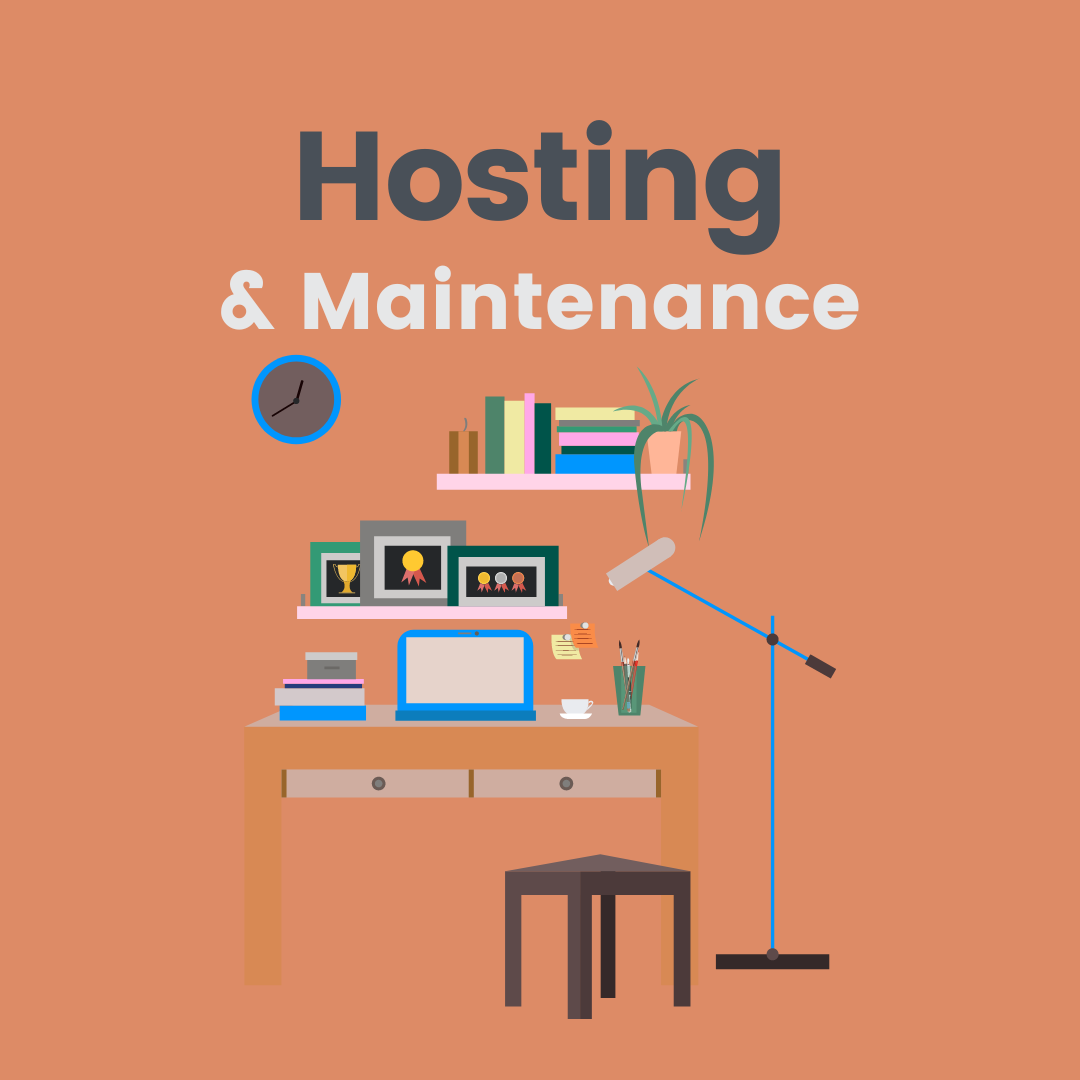On top of managing your marketing efforts, maintaining your website content, hosting, security, and updates can feel overwhelming. However, with the right plan for maintaining a website, you can stay on top of both while driving your business toward success. Whether you manage everything yourself or work with a web design team, the key to thriving online is consistency, optimization, and continuous improvement.

Regularly Update Your Website Content
Keeping your website content fresh is essential for engaging visitors and encouraging them to return. You don’t need to overhaul your site every week—small updates can make a big difference. Posting new content on your blog regularly shows both your audience and search engines that your site is active and relevant. This helps with search engine optimization (SEO), improving your visibility online. It’s also important to update your product and service descriptions as your offerings change. If you’ve introduced a new service or made updates to an existing one, your website should reflect that. Finally, refreshing visuals like images or banners can keep your site looking fresh, helping to enhance the user experience.
Optimize Your Website for SEO
SEO is crucial for making sure people find your site. Start by researching keywords that your audience is searching for. Once you know the most relevant terms, you can integrate them naturally into your website’s content. This includes titles, headers, and the body of your text, but avoid overloading your content with keywords. It’s also essential to optimize your meta tags and descriptions. These elements show up in search engine results, so a well-crafted meta description can make a big difference in maintaining a website that attracts visitors. Beyond keywords, focus on creating high-quality content that answers your audience’s questions or solves their problems. Search engines favor content that provides real value to readers.
Use Social Media to Promote Your Website
Your social media presence should work in tandem with your website. Each platform offers a unique opportunity to share your content and drive traffic to your site. When you post a new blog or launch a promotion, make sure to share it on your social channels. Engage with your audience by responding to comments and starting conversations. This helps build a community around your brand. Consistency is key—regularly sharing posts helps keep you visible in your audience’s feeds. If possible, use social media scheduling tools to plan your posts ahead of time, ensuring you maintain a steady presence.
Utilize Email Marketing
Email marketing is one of the most effective ways to stay connected with your audience. Regularly send newsletters to your subscribers to keep them informed about new blog posts, products, services, or special promotions. Segmenting your email lists allows you to send personalized, targeted campaigns based on customer preferences or behaviors. This can significantly boost engagement and drive more traffic to your website. Email campaigns are also a great way to promote upcoming events, sales, or special offers. Keep your messaging clear and direct, and always include a call to action that directs readers back to your website. Email capture can be added to your website, and email tools can improve this workflow, assisting in maintaining a website effectively.
Monitor Your Website Analytics
Understanding how visitors interact with your website is crucial for making informed decisions. Tools like Google Analytics provide valuable insights into visitor behavior. You can see which pages are most popular, how long visitors are staying, and where they’re coming from. This data helps you identify what’s working and what needs improvement. You’ll also want to monitor your traffic sources—whether visitors find you through search engines, social media, or direct visits. By understanding these metrics, you can adjust your marketing efforts to focus on what’s driving the most traffic. Conversion rates are another important metric to track. If you notice low conversions on certain pages, it may be time to optimize those areas for better performance, a crucial step in maintaining a website effectively.
Stay Up-to-Date with Trends
Staying informed about the latest trends in website design and marketing is essential. This helps ensure that your site stays relevant and competitive. Modern web design trends like minimalist layouts, fast loading times, and mobile optimization improve the overall user experience, keeping visitors engaged. On the marketing side, staying current with trends in social media, content marketing, and digital tools allows you to stay ahead of the curve. Whether it’s a new social media platform gaining popularity or a shift in how people consume content, being aware of these trends ensures your business stays adaptable and visible.
Continuously Test and Improve
Your website and marketing strategies should always be evolving. Regular testing helps you understand what works and what doesn’t. A/B testing is one of the most effective ways to see what resonates with your audience. Whether you’re testing different versions of a landing page, call-to-action buttons, or headlines, the goal is to identify which version performs better. Don’t forget to invite feedback from your users. Their input can be invaluable in highlighting areas that need improvement or features that are missing. Continuously monitor the performance of your marketing campaigns and be ready to adjust your strategy when needed. Experiment with new approaches, whether it’s testing different content formats, platforms, or messaging styles. Maintaining a website requires constant evaluation to ensure it meets user needs.
Regularly Update Your Hosting and CMS Software
Behind the scenes, your website relies on hosting and content management system (CMS) software to function properly. Regularly updating these systems ensures that your website stays secure and performs at its best. Security is one of the biggest reasons for staying up to date—regular updates patch vulnerabilities that could make your site a target for hackers. These updates also include bug fixes and performance improvements that keep your site loading quickly and functioning smoothly. Additionally, as CMS platforms evolve, they release new features that can enhance your website’s functionality and user experience. Keeping your hosting and CMS up to date ensures that your website remains secure, fast, and reliable. This is essential for maintaining a website efficiently.
Create a Schedule for Website and Marketing Tasks
Managing all of these tasks can seem overwhelming, but creating a consistent schedule can help keep everything organized. For example, you could start your week by updating blog content and sharing it on social media. Midweek might be a good time to send out email campaigns and review analytics from the previous week. As the week progresses, focus on website maintenance tasks like checking for broken links, testing forms, and reviewing product descriptions. At the end of the week, review your advertising campaigns and plan for the following week. Tailor your schedule to fit your business needs, but having a structure in place ensures that no important task is overlooked. Creating a schedule is key to maintaining a website effectively.
By following these strategies, you’ll not only keep your website running smoothly but also enhance your marketing efforts to attract and retain customers. Regular updates, optimization, and continuous testing are the keys to long-term success. SunnValley, a professional NH web design company, can help you with each aspect of maintaining your online presence.

